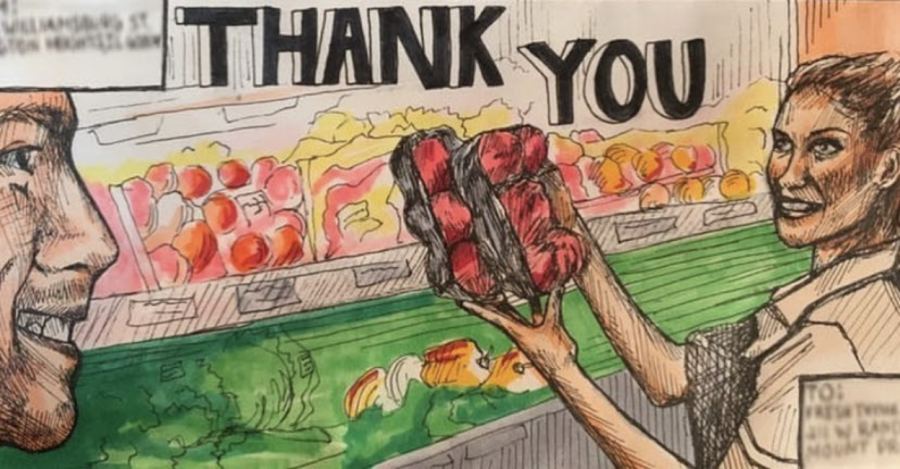BG art teacher promotes Appreciation Letter Project to support first responders during quarantine
In the past month, the coronavirus pandemic has sparked fear and unrest across the world. Remote Learning has been cemented in many schools around the country, and schools in Illinois have been shut down for the rest of the school year. However, Americans have displayed their love and support for one another through simple acts of kindness, and in some cases, even going beyond.
“The Appreciation Letter Project is a great idea by Mr. Field to spread happiness and appreciation to those on the front lines of this pandemic,” BG art teacher Kristin Overmith said.
Jordie Field, a long time art teacher at BG, recently developed a project devoted to writing encouraging messages and delivering them in decorated envelopes to first responders working to help the community. So far, the results have been well received.
“I have sent out two [letters], and have received overwhelming joy from the first trucking company that received letter number one,” Field said.
Although envelopes might seem like an arbitrary artistic choice for this project, a lot of thought went into this decision. Letters provide words of thanks, but decorated envelopes prompt immediate reactions, usually in relation to their visual appeal.
“The petite frame of an envelope gives me a chance to mess around with different techniques without worrying about the bigger picture, knowing I can always try again,” freshman Audrey Yang said.
Moreover, envelopes were also chosen for their commonality and relative availability in most households. Mediums such as oil paints and watercolors, although fun to work with, require additional tools such as specialized paper, brushes, paints, etc., which may not be accessible to all students.
“The envelopes do not need to be drawn or painted,” Field said. “Some students are collaging and or montaging some very interesting results.”
The Appreciation Letter Project began a few weeks ago, around the same time that Remote Learning began. According to Field, about 30 envelope designs have been submitted so far, and a majority of his students have been involved in their creation.
“My sons and I have made letters and plan to keep making them,” Oversmith said. “It is a way to give yourself a voice to creatively solve problems, to release emotions visually, and just get lost in the process of creating.”
The origin of the Appreciation Letter Project dates back many decades. According to Field, he first came across decorative envelopes during high school. Later, after serving in El Salvador as a Peace Corps volunteer from 1995 to 1997, Field created over 300 letters and envelopes addressed to friends and family members.
“Many were returned to me and form a visual diary of sorts,” Field said.
Currently, Field has promoted the Appreciation Letter Project primarily through Instagram, where the account “appreciation_letter_project” has been created for sharing student letter submissions and posting reactions from envelope recipients. It has garnered 50 followers.
“Instagram is the preferred social media platform artists use to share their work,” Yang said. “Because there are so many artists active on Instagram, it’s easy for members of the art community to encounter our cause and join it.”
Although Mr. Field will only be with BG for one more year, the effects of his Appreciation Letter Project will be long-lasting. Meanwhile, others have also been brainstorming ways to get involved in helping the community.
“Some ideas I have are talking with senior citizens in retirement homes who have become isolated and sending written notes to them with drawings attached,” Oversmith said.
Art has provided a much-needed outlet for all the stress and anxiety in many people during this lockdown. The Appreciation Letter Project has motivated students to start experimenting with their creative sides, now more than ever.
“Even if you feel art isn’t your strong suit, anything with thought and effort put into it will serve the same purpose – thanking your community,” Yang said. “You don’t need an established art background or technical mastery to do that.”

